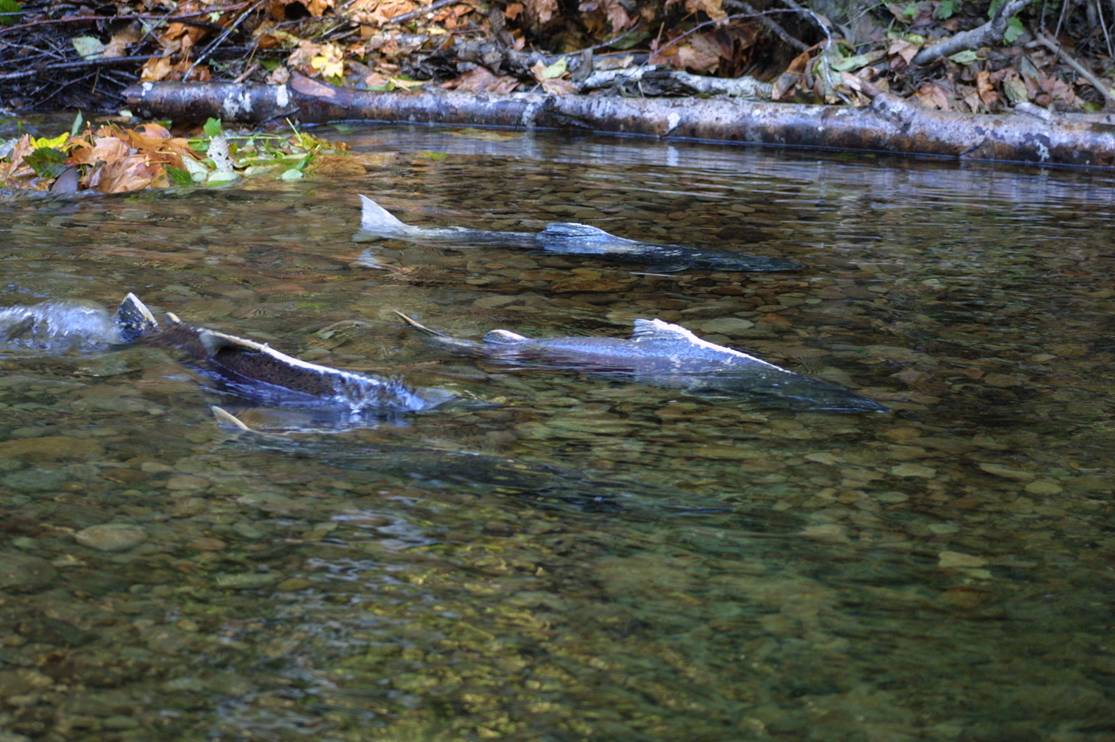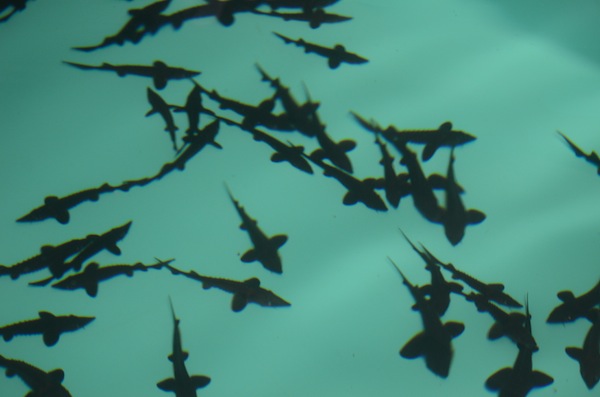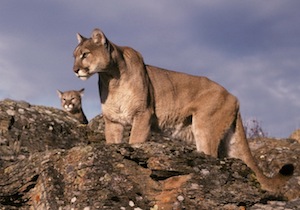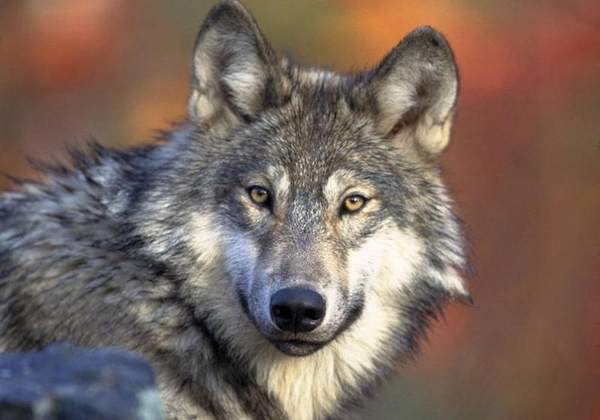10 Environmental Victories and Triumphs of 2013
With all the talk of rising temperatures, acidifying oceans and melting polar ice, it is hard to see the healthy trees for the forest, as it were. Yes, the emerald ash borer and the mountain pine beetle are making inroads, and yes, extreme weather is becoming the norm. But it’s important, too, to note the environmental triumphs and victories that tribes either helped engineer or benefited from, or both.
Native peoples reintroduced fading species, restored habitats and stopped big industry in its tracks. They drew attention to these causes and showed how they unify Indigenous Peoples and European descendants alike.
Several species began coming back, many of them thanks to the efforts of tribal programs. Northwest tribes were pleased to see a record return of Chinook salmon to the Columbia River. A healthy wolf population flourished in Yellowstone National Park, strengthening the wildlife web around it. Here are some of the more notable wins, and the tribes involved in making them happen.
1. Pushing Back Against Mega-Loads
The Nez Perce had been trying to stop mega-loads from traversing a federally designated scenic highway through their territory for years. In 2013, a judge finally said, “Enough.” The football-field-sized pieces of equipment destined for the Alberta oil sands up in Canada are no longer permitted to trundle within 50 feet of the Nez Perce creation site. Although the battle has now moved to Oregon and the Umatilla Tribe, this was a big win for the Nez Perce and sacred places.
RELATED: Nez Perce Oppose Mega-loads Through Reservation
Nez Perce Leaders Stand Firm on Frontlines of Mega-Load Transport
Judge Just Says No to Mega-Loads Through Nez Perce Reservation
Just Say No Mega-load! Columbia River Inter-Tribal Fish Commission Joins Protest
2. The Return of the Salmon
Build the habitat—or take out the obstacles—and they will come. Northwest tribes were exultant as more than a million Chinook salmon made their way back up the Columbia River to spawn, a record.
RELATED: Northwest Tribes Exult as Nearly One Million Chinook Return to Columbia River
Of course, there is still much work to be done—in fact, many habitat-restoration efforts seem to be compromised as fast as they can be put into place—but just the sight of so many fish returning was enough to keep hope alive.
RELATED: Video: Yakama Nation’s Work to Bring Back the Salmon
3. Black-Footed Ferret Rebounds
n August we noted the return of the black-footed ferret, thanks largely to the efforts of the tribes who hosted their reintroduction by the U.S. Fish and Wildlife Service. The Lower Brule Sioux, Cheyenne River Sioux, and Rosebud Sioux, all in South Dakota, plus the Northern Cheyenne and Fort Belknap reservations in Montana and a deeded ranch in Arizona managed by the Navajo all hosted the nearly extinct animal when it was released into the wild. Last seen, they were starting to reproduce. Could thriving be far behind?
RELATED: Tribes Pull Black-Footed Ferrets Back From the Brink
4. White Sturgeon Stages Comeback
The Kootenai Tribe of Idaho is keeping this endangered species, which has been around since the dinosaurs roamed, from going extinct by breeding them in a fishery.
Hatchery workers spend days every month in spring catching these huge fish, taking them to the hatchery and holding them until the females are ready to spawn. They then collect the eggs and return the adult fish to the Kootenai River.
RELATED: White Sturgeon Rebound With Help From Kootenai Tribe of Idaho
5. Air Spawning Keeps Steelhead Trout Alive
Without impediments, this sea-going trout can spawn twice, spending the intervening time in the ocean. But slack water reservoirs and numerous dams have caused less than two percent of kelts to survive the return trip. Enter the Yakama, Warm Springs, Colville and Nez Perce tribes, which have launched innovative programs to take steelhead trout and store them during the time they would normally live in the ocean, then re-release them when it comes time to spawn. It’s a one-of-a-kind program to save this threatened species that only Indian tribes are engaged in. Although the notion of “recycling” a fish might seem outlandish, that is in essence what they are doing.
RELATED: Tribes Recondition Steelhead to Bring Back Endangered Trout
Over in their corner, the Pyramid Lake Paiute Tribe celebrated the return of another ancient species. This one was in fact thought to be extinct, The New York Times reported in April, until fish with the same DNA was found in a creek near Pyramid Lake in Nevada. The tribe got to work, and by summer, tribal members were finding 20-pounders.
RELATED: Lahontan Cutthroat Trout Is Back From Near-Extinction, to Delight of Paiutes
6. Cougars Swarm Turtle Island
Be they known as pumas (Inca), cougars, mountain lions, catamounts or panthers, this feisty kitty has “re-colonized the Black Hills of South Dakota, the North Dakota Badlands and the Pine Ridge country of northwestern Nebraska,” The New York Times reported in June. More recently, National Geographic called one of the more remarkable animal comebacks on record.
RELATED: Cougar Repopulates Turtle Island
7. Big Oil Admits Defeat in the Chukchi Sea
For now, at least, offshore drilling has been suspended in the Chukchi Sea off Alaska, after a series of mishaps showed three oil companies that they were woefully unprepared for emergency response, given the extreme weather.
Royal Dutch Shell started the trend by nixing its 2013 Arctic offshore drilling plans altogether because of equipment problems, the company announced on February 27. About a week later, Norwegian conglomerate Statoil said it would hold off on drilling until at least 2014. Most recently, ConocoPhillips announced on April 10 that it was suspending its plans to drill exploratory wells off Alaska’s Arctic coast in 2014. Though Alaska Natives did not directly engineer this, it was a victory for them and other environmental stewards.
RELATED: Three Oil Giants Suspend Chukchi and Beaufort Sea Drilling Plans
8. Bison Gets Its Day
The bison finally got its day—the first Saturday in November, to be exact, when the first official National Bison Day was decreed.
RELATED: Hug a Bison! Nov. 2 First National Bison Day
Earlier in the year, back in August, the first genetically pure bison in a century were released onto the Fort Belknap Reservation in Montana.
RELATED: Genetically Pure Bison Returned to Fort Belknap After a Century Away
9. Eagle Killing Doesn’t Pay
In November, Duke Energy Renewables Inc. was not only fined copy million but also pleaded guilty to criminal charges for killing eagles with its wind turbines. In doing so, Duke became the first wind-power company to ever be found criminally liable under the federal Migratory Bird Treaty Act. Although Duke’s earnings dwarf the fine, the plea and fine combo marked a milestone.
RELATED: Eagle-Killing Wind Turbine Company Fined copy Million
10. Wolves Prove Their Worth
The resurgence of the wolf population in Yellowstone National Park has benefited everything around it, researchers ascertained last summer. The wolves eat the elk, which then do not eat the berries, which then leaves more food for grizzlies, wrote the team from the universities of Oregon and Washington State in the Journal of Animal Ecology.
RELATED: Wolves of Yellowstone Feasting On Elk; Good News For Bears & Berries
Read more at http://indiancountrytodaymedianetwork.com/2013/12/31/10-environmental-victories-and-triumphs-2013-152924
© 1998 - 2014 Indian Country Today. All Rights Reserved To subscribe or visit go to: http://www.indiancountry.com









